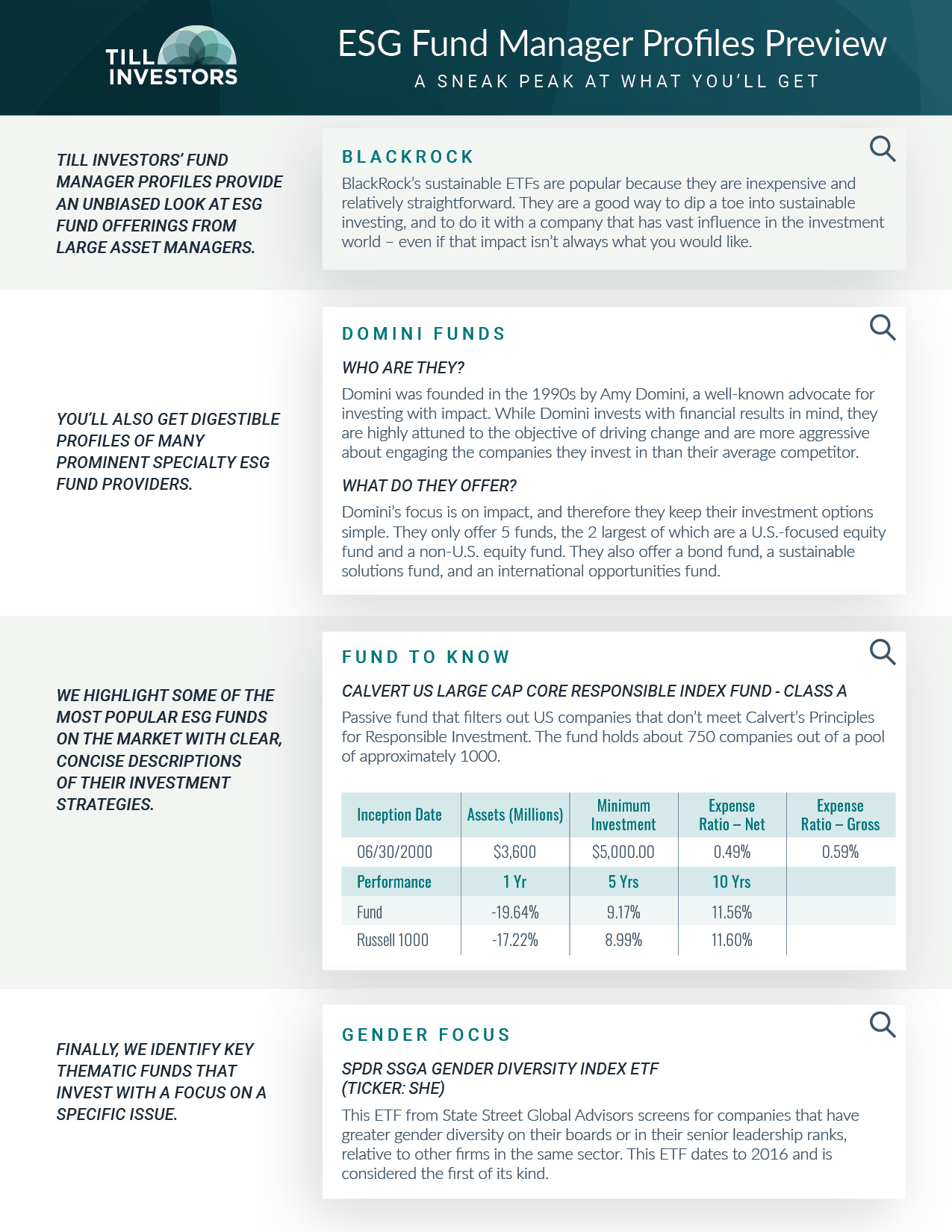How You Can Invest in Climate Stability for Your Retirement

An Interview with James Regulinski

James Regulinski is a fiduciary. He’s also the co-founder of Carbon Collective, a regulated investment advisor whose primary mission is to offer a comprehensive investment strategy designed to combat climate change. So what matters more to Regulinski — fiduciary duty, or climate change? Are these concerns even compatible?
In 2023, we’ve seen a wide ranging political debate about what sustainable investing is and whether or not it is appropriate for anyone holding a fiduciary role. But in this interview with Till Investors, Regulinski explains why he thinks that debate is off base. In his view, investing in climate solutions is challenging, but it is absolutely in the best interest of investors.
Q: What is Carbon Collective?
A: Carbon Collective is an investment advisor — specifically, we have created an investment strategy that is designed to combat climate change. But we’re not just here to try to have an impact. Carbon Collective is a regulated entity with a fiduciary responsibility to our shareholders. Specifically, being a fiduciary means we are legally bound to act in the best interests of our clients. We see our climate strategy as an excellent way to both support, and to benefit from, an alternative energy future.
Q: What does it mean to you to be a fiduciary?
A: The traditional financial fiduciary is someone who grows your assets without taking on excessive or unwarranted risk. We care a great deal about these long-standing duties of care and prudence. But in our view, it’s impossible to leave out legitimate concerns about the destructive potential of climate change. I think of it in these terms — we’re helping people build for a future they will want to retire into, and climate stability is in the best interest of all shareholders.
Q: How does a person invest in “climate stability”?
A: Our approach is to think expansively about how our clients can use their assets to drive change. There are three essential aspects to our strategy. First, we divest entirely from fossil-fuel reliant industries, such as oil and gas producers or coal-based utilities. Second, we reinvest those funds into companies that are offering climate solutions. And finally, we engage with companies in the remainder of the portfolio, to pressure them to decarbonize faster.
Q: In Till Investors’ book, we talk about sustainable investing “fighting styles” — we call them avoiding, rewarding, and influencing. That lines up neatly with the three approaches you are using.
A: Yes that’s right. For us, the urgency of the climate crisis warrants combining all three approaches.
Q: How easy is it to implement your strategy?
A: At a high level, this approach is a really simple way to advocate for climate solutions while still holding a well-diversified portfolio with a proper mix of risk and reward that will make sense over the long term. That’s important, because switching from fossil fuels to net zero will be a large and lengthy transition, and we don’t want to expose shareholders unduly to blind alleys or false starts. We are trying to push ambitiously, but we can’t guarantee perfection.
Q: How are you trying to identify the right decisions in a time of great uncertainty?
A: Wherever possible, we use models developed by experts in the field. For example, we have used research from Project Drawdown, which is a leading think tank that offers a solution for climate stability. Their work has helped us identify what the net zero transition will look like, what technologies will be needed, and what demands we should place on companies we hold in the portfolio.
We also look at work from organizations like Rewiring America as we consider what kind of companies offer meaningful technologies that will be part of the climate solution. The point is, there are a lot of models we can use that point to how society will change and how businesses will need to adapt.
In our view, it’s important to build our thinking on substantive, scientific-based projections and guidelines. We’re still early in the climate transition, and not all of the solutions we will need are yet available to invest in. Data isn’t always as good as you want it to be, and it’s easy to get distracted by empty corporate promises. Fundamentally, we have to invest in technologies that will address climate problems.
Q: What kind of businesses do you consider to be climate solvers?
A: In the energy space, we like the economics of solar. Among transportation companies, we are actively looking at hydrogen power technologies. We are also drawn to companies making progress on the circular economy, such as those recycling batteries and plastics.
But this is a core portfolio, and we own leading companies across the market. We’re happy to include large, influential companies — even if they aren’t offering climate solutions directly — so long as they are responsive to our concerns about, for example, reducing their carbon footprint or making their buildings more efficient.
Q: How much impact can an everyday investor have on climate change?
A: Large companies and new technologies will lead the way on climate solutions, but those actors are surprisingly responsive to what investors are looking for. Let’s put it this way — if you leave your money in the status quo, you continue to put pressure on maintaining the status quo. We believe that investing with sustainability in mind will put you out in front of the problems of the future.


